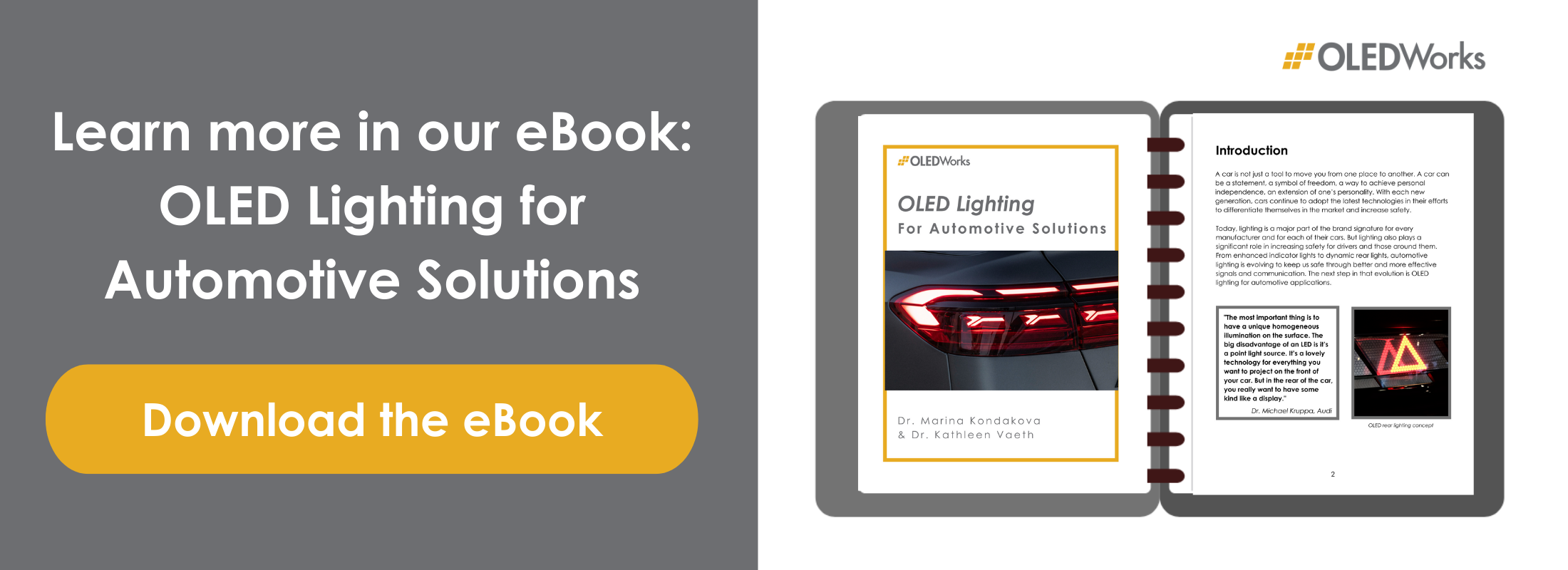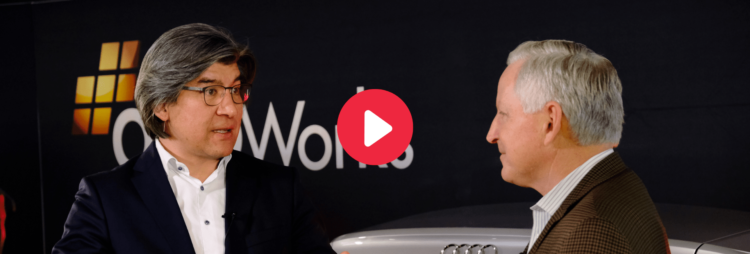![How Supplier Relationships Differ When Working with OLED Lighting [Video Interview]](https://www.oledworks.com/wp-content/uploads/2022/06/ISAL-Interview-Header-Partnerships-750x254.png)
In our final interview from this year’s International Symposium on Automotive Lighting (ISAL), the teams from Audi, STMicroelectronics, and OLEDWorks discuss what is next for automotive OLED lighting technology. From flexible panels to increased segment count and color options, we seem to be heading towards a Complete OLED Rear Lighting Solution as technology successfully advances.
—
What can we expect for the future of automotive OLED lighting?
JOCHEN BARTHEL
We are already in tight collaboration with the teams from OLEDWorks and with Audi to look together at what could be done next. We are trying to enhance the number of segments, and for us, there is no limit, so we can do, a factor two, a factor five, a factor ten more. All of that can be supported with the electronics. It depends on the proper definition of the requirements, of the interfaces, of the functionalities, and then we can repeat a similar success story as for the current generation.
STEPHAN BERLITZ
With OLED technology, of course, more segments is interesting. We want it display-like, so we need even smaller, more segments. But on the other side, of course what styling is it? A piece also to the side, so this flexible OLED is just what they need. Every time they see your sample, they say, “yes! When do I get it?” And put your fingers away! It takes a bit. But of course they want flexible. And maybe for the future it’s then transparent of course, which will give more depth into the taillight for example. And, of course, you already showed it — amber. More colors, more brightness is something that would be nice.
DAVID DEJOY
So the possibility of a complete OLED solution rear combination light?
BERLITZ
Yes, and maybe even for the front! But then we would need white and more intensity, so maybe that’s a bit far away.
MICHAEL KRUPPA
The latest designs, if you look on our cars — for example, on the A6 — you would have realized there’s a lot of light on the side, and we don’t want to get the limitation that the rigid glass plate is not coming around the corner. In the end, what we would like to have is really to follow the wrap-around, to have a maximum application field. Also, the chance to put light on the side of the car, as long as it is part of tail lighting, gives us the possibility to use this as a door opener to go for communication content on the side.
WERNER THOMAS
I think the most interesting one is standing here, I would say. Because to have a semiconductor light source which is perfectly homogenous — we’re cutting it into segments which you control digitally — is of course very, very nice, but it’s still a rigid piece of glass. And here with a conformable substrate, you can then go directly into the most outer direction of the car, into the “wrap around” how we’re calling this. This is of course also an area where you can have this display-like feeling, which you can bring now into a new position that we don’t have at the moment.
KRUPPA
If I’m talking in the front, the front I’m more putting light on the road, so I have more projection units, more LED and laser-based systems. But on the other hand, we also go on the surface more and more. If you look on all the new cars upcoming, the complete grill is being illuminated. So, the question is, sooner or later, do we also have white OLEDs for automotive exterior? I don’t know, but this might also be a chance in the future.
DEJOY
We’re really very proud and pleased of the readiness of OLED technology for automotive specifically, and the preview we gave in 2019 has really come to reality. We’re so excited to see what comes next.
![The Exciting Future of Automotive OLED Technology – What’s Next? [Video Interview]](https://www.oledworks.com/wp-content/uploads/2022/07/ISAL-Interview-Future-Header-1200x406.webp)

![Why Personalized Lighting Options in Vehicles are Important [Video Interview]](https://www.oledworks.com/wp-content/uploads/2022/07/ISAL-Interview-Header-Personalization-750x254.webp)
